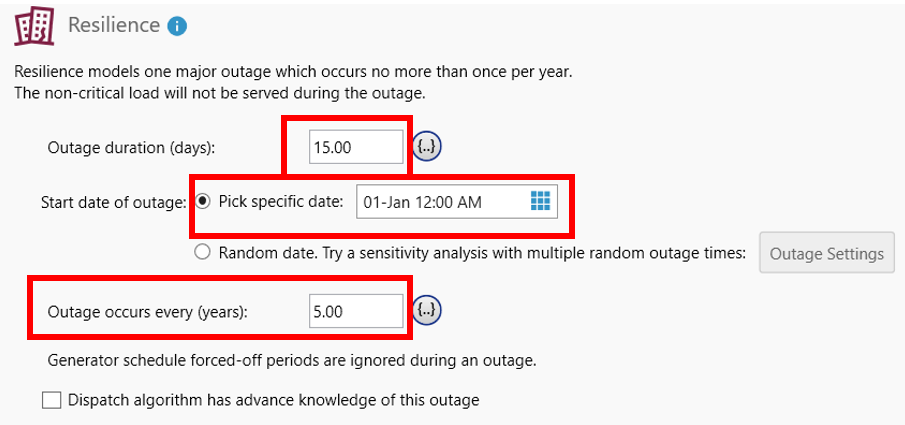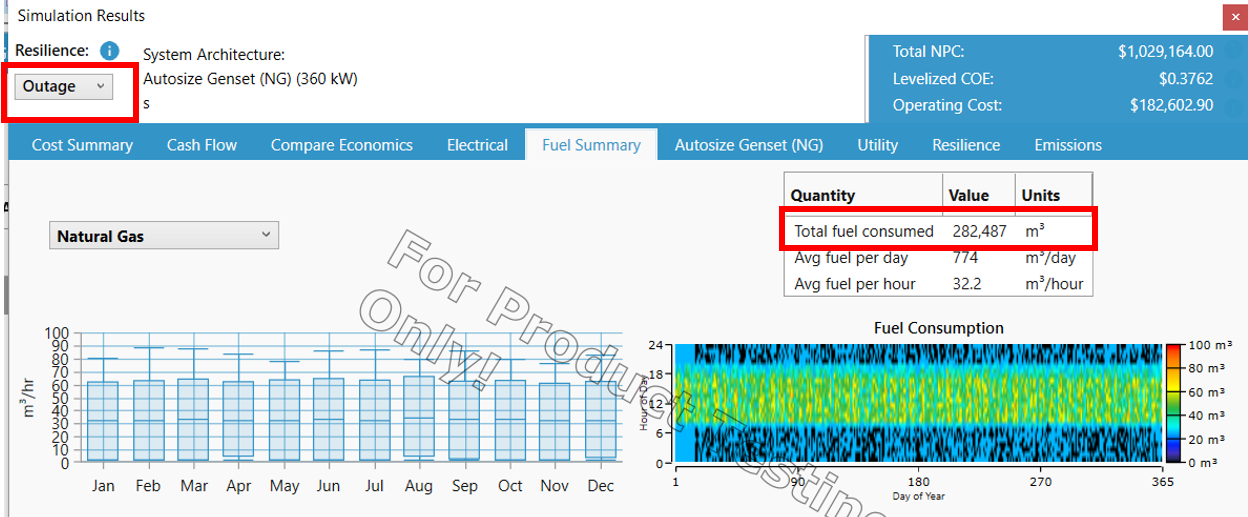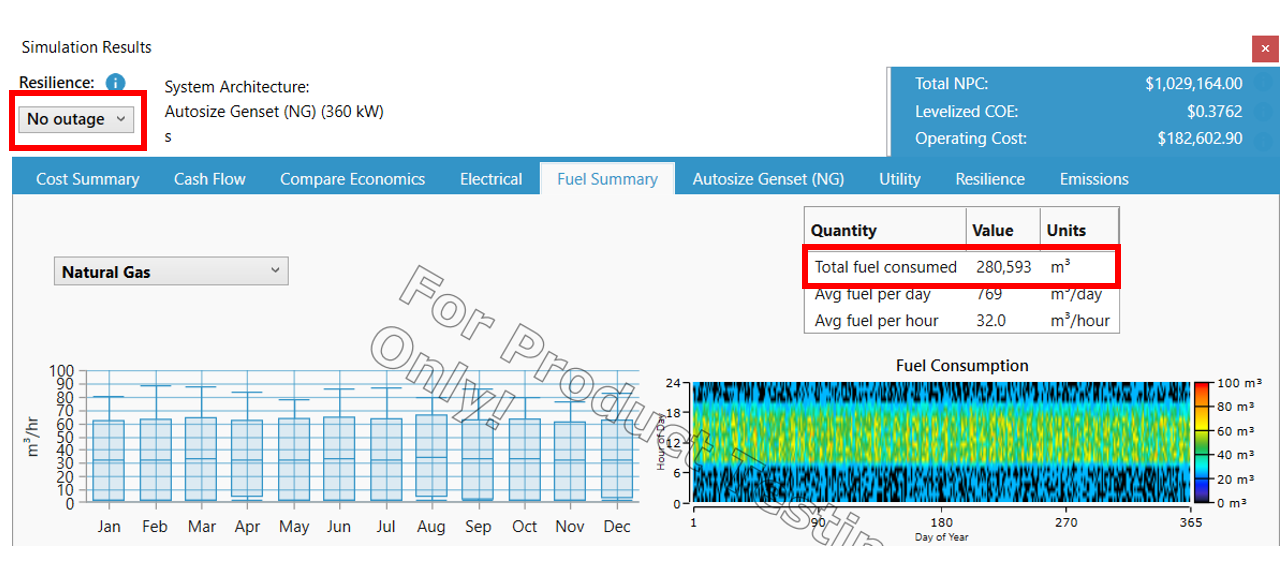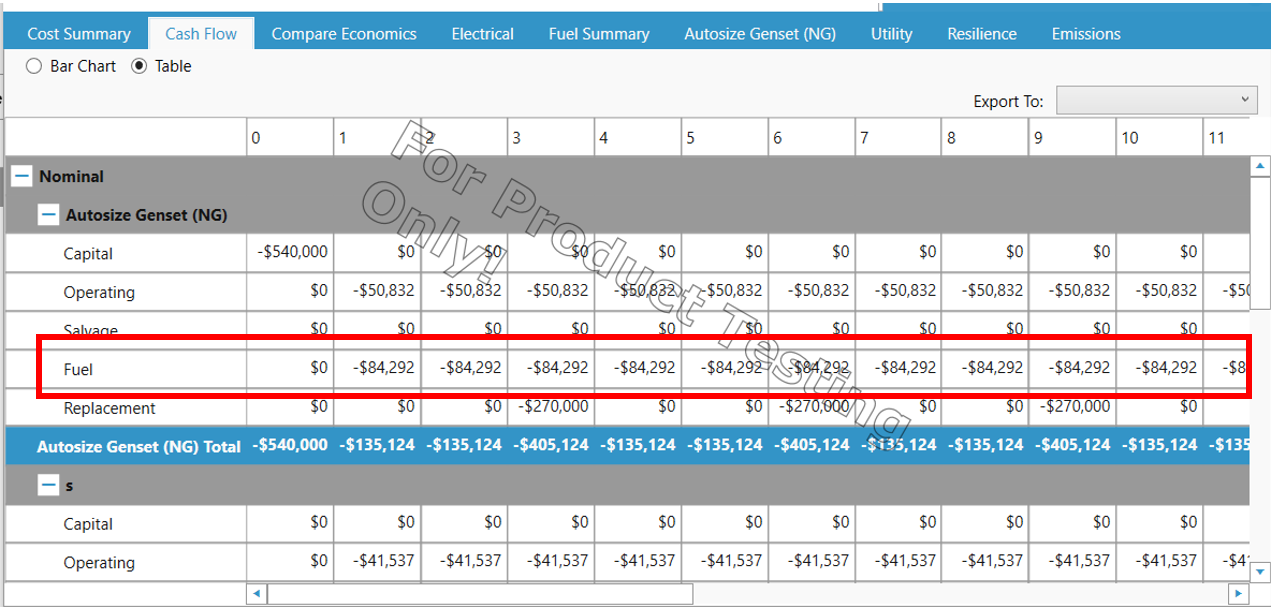
HOMER Grid 1.10

Resilience in HOMER Grid allows you to investigate the savings and autonomy enhancements from adding renewable generation and/or storage to a grid-connected system with a backup generator. HOMER Grid Resilience can estimate the fuel savings and reduction in operating costs. Based on the frequency you specify for the outage (“Outage occurs every…”) HOMER Grid will calculate the effect of the outages on your system’s COE and NPC. In this way, HOMER Grid can model the reduced running costs during an outage and count this as another revenue stream for renewable generation and/or storage on site.
Homer Grid allows you to enter a multi-day outage and the frequency with which this outage occurs. For example, a 10 day outage that occurs every 5 years. Let us assume that the project lifetime is 25 years. It would make a big difference in the economics of the system if this 10 day outage occurred in this sequence (year 0, 5,10,15,20,25) versus this sequence ( year 2, 7, 12, 17,22). To keep it simple, Homer Grid models 2 years: 1 year with No Outage and 1 year with the outage. So in the above example, HOMER Grid would model 1 year with no outage, and another year with 10-day outage. When you calculate results in HOMER Grid, it runs the normal simulations and optimizations modeled with no outages, plus it performs an extra simulation with the outage period that you specify for each system design. HOMER calculates the operating costs for the “no-outage” simulation and for the “with-outage” simulation and computes the cash flows as a weighted average depending on the probability of the resilience outage happening in any given year (one divided by the value specified for the “Outage occurs every…”).
If you are using a generator in your model, then any scheduled forced-off periods for the generator are ignored during an outage. You can use the generator maintenance schedule, but the downtime must be set to zero for each maintenance item. HOMER Grid doesn’t run a stochastic analysis of system reliability in a disaster scenario. There is no unmet load associated with a resilience simulation. Any unmet load due to generator downtime in HOMER’s simulation would be coincidental and would not be a useful result.
Sample Resilience Calculation
Let us calculate the weighted average fuel cost for a model with a Resilience outage. This example shows an outage that occurs every 2 years and lasts 15 days when it occurs. Every time this outage occurs, it begins on January 1st. You can see the below screenshot of the outage.

Let us make the Project Lifetime as 3 years for this project. For this model, HOMER would do the following steps to calculate the system costs over project lifetime.
Step 1: HOMER would simulate 1 year with the outage event (so during this year the grid would be down for 15 days starting January 1st). It would then calculate the costs incurred during this year – Generator costs, utility bill etc. You can calculate the Fuel cost by selecting the “Outage” option in the detailed results under Fuel Summary Tab, and multiplying the total fuel consumed with the fuel price. (Shown in screenshot below) Let us denote the fuel cost during this year as Coutage= 282,487 m3*0.3 $/m3= 84746.1 $

Step 2: HOMER would simulate 1 year without the outage event (so during this year the grid would be available starting January 1st). It would then calculate the costs incurred during this year – Generator costs, utility bill etc. You can calculate this Fuel cost by selecting the “No Outage” option in the detailed results under Fuel Summary Tab, and multiplying the total fuel consumed with the fuel price. (see screenshot below) Let us denote the fuel cost during this year as CNo_Outage= 280,593 m3*0.3 $/m3=84177.9 $

Step 3: Since we had mentioned that the outage occurs every 5 year, the weighted average cost of fuel = 1/5 (Coutage )+ 4/5 (CNo_Outage) = 1/5(84746) + 4/5(84177.9) = 16949.2 + 67342.32 = 84291.52 $
This is the number you will see for Generator fuel cost in the cashflow

